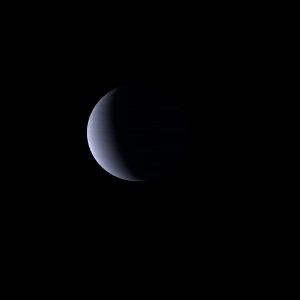|
|
Space Astro
|
Info for exoplanet "Wuxwang"
| Scientific (actual) data |
|---|
| Name | HAT-P-21 b |
| Planet status | Confirmed |
| Planet mass | 4.063 |
| Radius | 1.024 |
| Orbital period | 4.12446 |
| Semi major axis | 0.0494 |
| Orbit eccentricity | 0.228 |
| Inclination | 87.2 |
| Angular distance | 0.000194 |
| Discovered | 2010 |
| Updated | 2014-09-28 |
| Omega | 300 |
| Tzero tr | 2455000 |
| Publication | Published in a refereed paper |
| Detection type | Primary Transit |
| Star name | HAT-P-21 |
| Right ascension | 171.28° |
| Declination | 41.03° |
| Mag v | 11.46 |
| Star distance | 254 |
| Star metallicity | 0.01 |
| Star mass | 0.947 |
| Star radius | 1.105 |
| Star sp type | G3 |
| Star age | 10.2 |
| Star temperature | 5588 |
| Wikipedia article | HAT-P-21 b |
Back
| |
| Fictional info (?) |
|---|
| Suggested name | Wuxwang |
| Planet type | Large hot gas giant |
| It has the densest atmosphere of the two large hot gas giants, consisting primarily of ammonium hydrosulfide (NH4SH).
lengthy journey. |
| Atmosphere | Ammonium hydrosulfide (NH4SH) | 61% |
| Sulfur dioxide | 24% |
| Hydrogen deuteride (HD) | 14% |
| Carbon monoxide | 0.25% |
| Atmospheric pressure | 9 bar |
 |
| No known satellites |
| Google search for Wuxwang |
|
Website by Joachim Michaelis
|
|
|
|